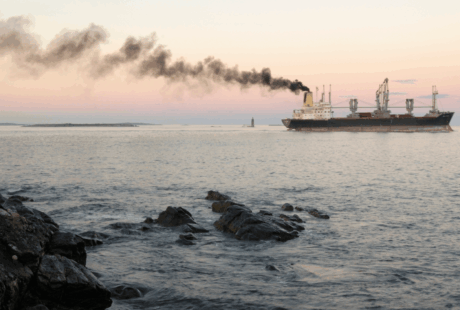Chapter 3: Wind propulsion & Energy Transition
Wind propulsion, an age old technology, is making a comeback to help the maritime industry reach its decarbonisation goals. And with the IMO’s commitment to achieving “at least 5% (striving for 10%) zero or near zero (ZNZ) emission technologies, fuels and/or energy use by 2030”, wind propulsion is emerging as a critical part of the solution.
The big picture: from single ship savings to industry wide impact
Wind propulsion can reduce fuel and energy savings on a single vessel, but when applied across the global fleet, its impact grows exponentially. The Seas At Risk’s recent report Wind First! shows that incorporating wind assisted propulsion across three most commonly used vessels, across various trade routes, leads to significant energy savings. This data offers a strong case for scaling up wind assisted propulsion as a key enabler of the IMO’s 5% ZNZ energy target.
How wind propulsion helps hit the 5% target
Immediate emission reductions: Retrofitting wind technologies on existing vessels immediately reduces fossil fuel consumption, which directly cuts GHG emissions. In fact, every gust of wind captured by the sails (or wings are they are referred to), means fewer emissions, taking the maritime sector closer to its decarbonisation goals while directly increasing their share of zero emission energy and reducing the reliance of the shipping sector on fuel.
Easing the transition to clean, alternative fuels: E-fuels – made from renewable electricity- are promising to be part of the transition to a decarbonised shipping future, but their production and distribution are still developing, and scaling up will take time and money. But through adopting wind propulsion, we can buy back that time. By reducing overall fuel demand, it allows for a more gradual and predictable transition to e-fuels, ensuring that it aligns with the IMO’s ZNZ 5% energy target, reducing any shocks there may be along the way.
Accelerating decarbonisation efforts: Wind propulsion technology is available and ready now. It can be retrofitted on to most vessels without needing the installation of large infrastructures, unlike e-fuels and other alternative technologies. Existing ships can be fitted with sails, rotors, wings, or other wind-assisted systems, cutting GHG emissions immediately. Every successful fitting and journey boosts confidence in the maritime industry’s ability to decarbonise, resulting in further investments in zero-emission solutions and green technologies, showing clear signs that shipping’s energy transition is feasible.
Conclusion: Wind First!
Wind propulsion alone cannot decarbonise the shipping sector, but it is a powerful enabler of the IMO’s energy targets. It is not about going back to the days of Columbus, but about creating momentum with modern technology and innovation.
Through the reduction of fuel consumption, easing the transition to e-fuels, and accelerating the path towards full decarbonisation in shipping, harnessing wind power can quickly and successfully shift the narrative towards a clean shipping sector. It’s not just about efficiency but also securing a viable and cost-effective pathway to meet the IMO’s targets. With the wind at our backs, decarbonisation is within reach.
Read Chapter 4: the Levy and Food Security
Posted on: 2 April 2025


